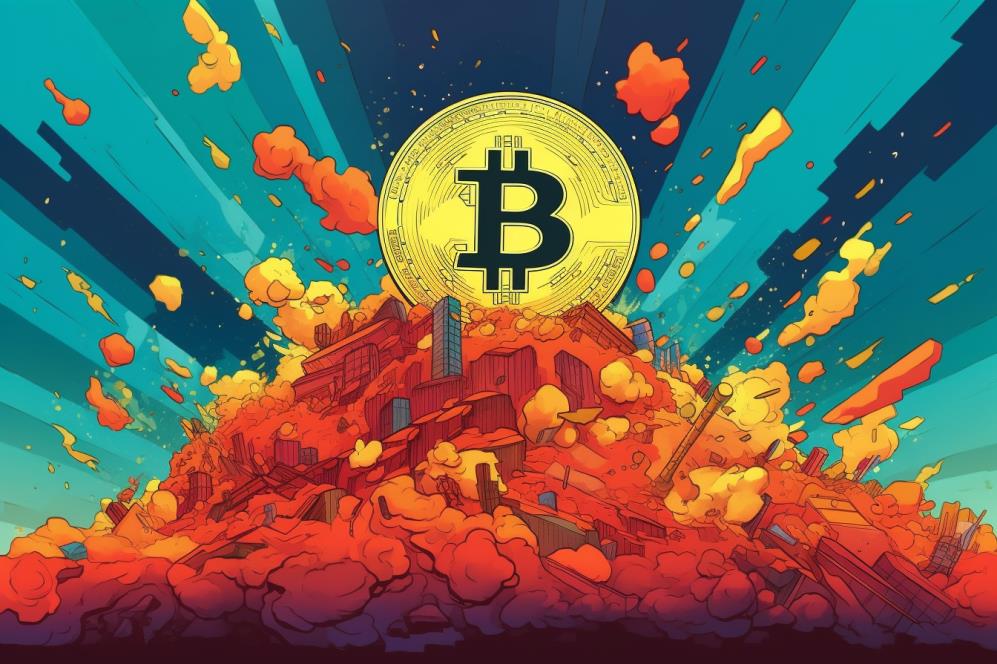Bitcoin Blockchain's Meme Token Frenzy: Clash of Coders

Have you ever been stuck in traffic, cursing the one car that broke down and created a gridlock? Now imagine that car was a bunch of memecoins, like the infamous Pepe, and the road was the Bitcoin blockchain. There's a storm brewing among the keepers of the Bitcoin code, a sort of civil war if you will, over whether or not to exterminate these memetic invaders causing all sorts of upheaval. Some want them gone, like yesterday, while others see them as digital Picassos, changing the way we use and see the Bitcoin network. And so, the plot thickens.
Bitcoin blockchain's coders, the guardians of this cryptographic realm, are at odds over whether to squash the swarm of meme tokens proliferating across the network. The frenzy over these speculative coins caused a record surge in transactions and an 11-fold increase in processing fees in May, resulting in a network congestion that forced crypto exchange Binance to temporarily suspend Bitcoin withdrawals.
The crypto purists, more like the Bitcoin fundamentalists, fear that a future wave of memecoin trading could disrupt Bitcoin's core functions – as a payment system and a store of value. They propose implementing a software update that would block such transactions, essentially creating a spam filter for the Bitcoin blockchain. Bitcoin developer Ali Sherief expressed that "Bitcoin was never intended to serve as a base layer for meme tokens."
On the other hand, some developers defend the software innovation, known as Ordinals, which has enabled the Bitcoin blockchain to host an unprecedented number of memecoins and nonfungible tokens (NFTs). Casey Rodarmor, the developer behind Ordinals, sees it as an opportunity to inscribe digital content, including videos, images, and text, on satoshis, the smallest Bitcoin unit. This new feature was readily adopted by the blockchain community and subsequently led to a memecoin explosion.
The memecoin mania reached such heights that at one point, they accounted for 65% of Bitcoin's blockchain transactions. This sudden surge in activity affected the average fee per transaction, raising it from $2.80 at the beginning of April to $30 in early May, before settling down to $4 by month-end. The meme token frenzy has been beneficial for Bitcoin miners, who netted a cool $45 million from Ordinals-related activities.
While some, like veteran Bitcoin developer Luke Dashjr, liken Ordinals transactions to spam and advocate for their removal from the Bitcoin network, the decentralised nature of Bitcoin means that no single person or entity can make this decision. One potential solution could be a 'hard fork', creating a version of Bitcoin that doesn't support Ordinals. However, Andrew Poelstra, director of research at Blockstream, doesn't see a consensus forming around this.
The Ordinals saga underscores the need for the Bitcoin network to increase its transaction capacity to prevent future traffic jams. It has also revealed innovative ways to utilise the network, such as storing arbitrary data. This could potentially attract artists, activists, and even governments to leverage the network's storage space, driving demand and transaction costs in the future, according to Sami Kassab, a research analyst at Messari.
Regardless of where you stand on the memecoin divide, it's clear that this is a defining moment in the Bitcoin story. It's a tug of war between the purists and the innovators, and the outcome will shape the future of the Bitcoin blockchain. Buckle up; it's going to be a wild ride.




